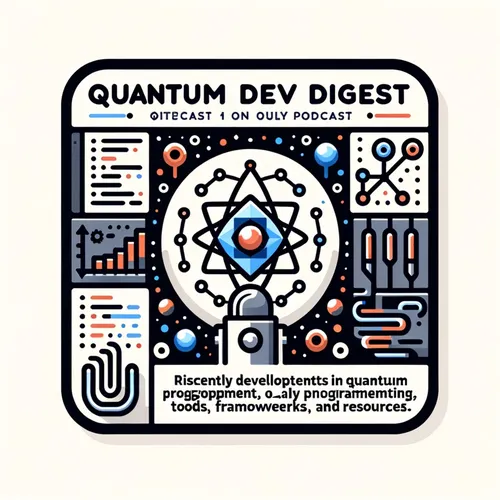Quantum Leaps: Shattering Bottlenecks, Harnessing Entropy, and Encoding Life
- Author
- Quiet. Please
- Published
- Sun 24 Aug 2025
- Episode Link
- https://www.spreaker.com/episode/quantum-leaps-shattering-bottlenecks-harnessing-entropy-and-encoding-life--67495855
This is your Quantum Dev Digest podcast.
Barely an hour ago, in a fluorescent-lit lab at the University of Sydney, an experiment shattered one of quantum computing’s nagging bottlenecks. This is Leo, your Learning Enhanced Operator, sharing the quantum dispatch at the speed of light—for Quantum Dev Digest.
So, let’s jump right to the quantum event horizon. Researchers in Sydney have pulled off an engineering feat: a single-atom logic gate that could drastically reduce how much hardware we need for robust, error-correcting quantum computers. They employed a trapped ytterbium ion and encoded two full logical GKP qubits within it. Picture this as fitting two novels’ worth of information into a single Morse code dot. By weaving error correction directly into the physics of the qubit—using the Gottesman–Kitaev–Preskill code—they’ve sliced the overhead of conventional quantum error correction. That’s like shrinking the steel skeleton for a skyscraper into a single support beam. More room, less loss, far higher ambition for scale.
Why is this a quantum leap? Quantum computers fight entropy every femtosecond, with noise threatening to decohere delicate qubit states. Hardware-efficient approaches are our answer to “How big can you go before the building falls over?” Imagine compressing New York’s subway map onto a single ticket—then using that ticket to travel everywhere at once.
Of course, the pulse of progress keeps accelerating on other fronts. In Berlin, a new algorithm for quantum state tomography promises a doubly-exponential speedup. This lets researchers reconstruct highly complex quantum states with just a handful of measurements, rather than being buried by endless data. It’s like taking a panorama with a single click in Times Square at midnight—every fleeting light captured, nothing lost in the blur.
A day earlier, teams in New Zealand and Austria demonstrated how to turn energy loss—a notorious bug—into a feature, by locking hybrid magnon-photon states at special “exceptional points.” This means certain quantum systems can be steered with less noise, potentially transforming quantum sensing and networks. In the biological domain, scientists at the University of Chicago turned a humble fluorescent protein—EYFP—into a working, optically detectable spin qubit, stable inside living cells. Turning life’s own building blocks into quantum information carriers: imagine if your barista’s apron could double as a quantum sensor for the perfect espresso.
If all this sounds dizzying, let me ground it in everyday terms. This week’s breakthroughs are to quantum computation what inventing the steam engine was to the Industrial Revolution. We are learning not only to shrink and harden the engine, but also to drive it with light, magnetism, and even life itself.
Quantum phenomena are all around us—entangled in the unpredictability of markets, the collective action in a crowded stadium, or the way a single decision alters a network. And now, as we bring more quantum order to chaos, we’re on the brink of technology that will transform everything from manufacturing lines to personalized medicine.
Thanks for tuning in to Quantum Dev Digest. If you ever have questions or want a topic discussed on-air, send me a quantum packet at [email protected]. Remember to subscribe, and check out Quiet Please dot AI for more. This has been a Quiet Please Production. Until next wave—stay superposed.
For more http://www.quietplease.ai
Get the best deals https://amzn.to/3ODvOta
